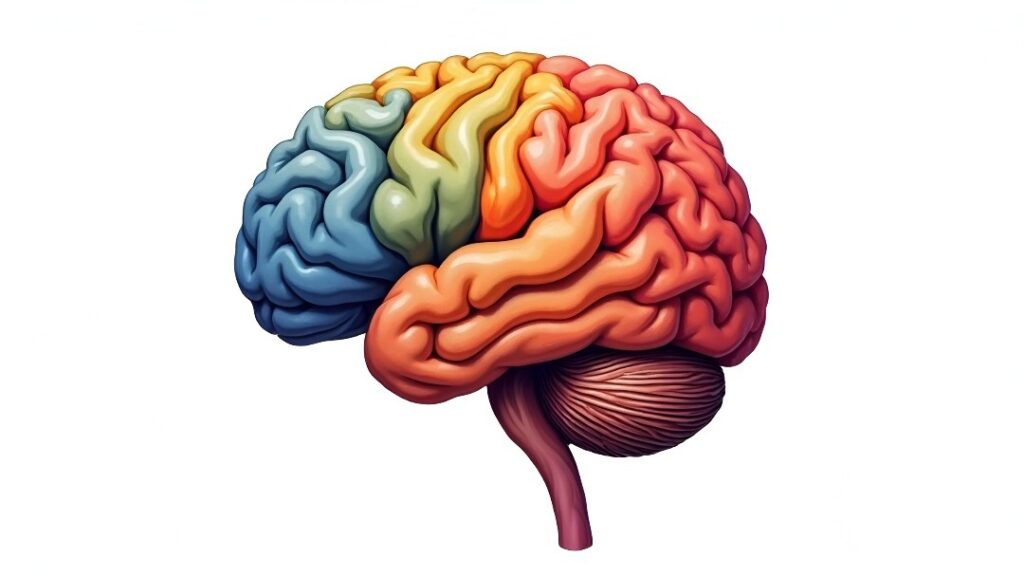A positive mindset is not just a feel-good concept, it is a scientifically validated tool that rewires your brain, enhances resilience, and drives peak performance in high-pressure environments. In this article, I break down the neuroscience, psychology, and practical steps you can use to harness positivity for better decisions, creativity, and long-term success.
The Neuroscience of Positivity
“The mind is everything. What you think, you become.” Buddha
Your brain didn’t evolve to optimize performance; it evolved to survive. But a positive mindset allows you to hack this system for growth. Here’s how the critical brain structures and neurochemicals work to make positivity a high-performance tool.
Brain Structures That Fuel Performance
- Prefrontal Cortex: Known as the brain’s CEO, it governs planning, focus, and decision-making. Positivity activates it, giving you clarity under stress.
- Amygdala: The brain’s fear center. A positive mindset dampens its overactivity, reducing anxiety and impulsive reactions.
- Nucleus Accumbens: Part of the reward system, it lights up when you feel joy or motivation. Positivity activates this, reinforcing rewarding behaviors.
Neurotransmitters & Hormones
Positive thinking triggers a cascade of chemicals:
| Neurochemical | Role in Performance |
|---|---|
| Dopamine | Motivation and learning |
| Serotonin | Mood stabilization and emotional balance |
| Endorphins | Pain reduction and resilience |
| Cortisol | Stress hormone, chronic negativity spikes this and impairs performance |
High cortisol can weaken memory, lower immunity, and reduce your cognitive edge. Optimizing your emotional and chemical environment through positivity is like tuning your brain for efficiency.
Neuroplasticity and Habit Formation
“Neurons that fire together, wire together.” Donald Hebb
Your brain can rewire itself through repeated thoughts and actions. Practicing gratitude, mindfulness, and optimism builds neural pathways that make positivity the default mode. Studies show that consistent positive practices increase BDNF (Brain-Derived Neurotrophic Factor), enhancing learning, memory, and mental resilience (source).
The Psychology of a Positive Mindset
Neuroscience explains the “how,” but psychology explains the “why” and “what to do.”
Cognitive Appraisal and Reframing
“It’s not what happens to you, but how you react to it that matters.” Epictetus
People with a positive mindset see setbacks as feedback, not failure. Cognitive reframing lets you turn obstacles into opportunities. For example, a trading loss can be seen as a data point for improvement, not a catastrophe.
Self-Efficacy and Belief
“Believe you can and you’re halfway there.” Theodore Roosevelt
Self-efficacy is your belief in your ability to succeed. Positive self-perception strengthens confidence, effort, and persistence. This mindset is critical for traders, founders, and performers under pressure.
Goal Setting and Motivation
“A positive attitude sparks extraordinary results.” Wade Boggs
Optimistic individuals:
- Set ambitious yet realistic goals
- Stay motivated through challenges
- Maintain energy for long-term pursuits
The Power of Positive Emotions
Barbara Fredrickson’s Broaden-and-Build Theory shows that emotions like joy, gratitude, and hope expand thinking, improve problem-solving, and build long-term resources like resilience and relationships.

How a Positive Mindset Drives Peak Performance
A positive mindset improves both your mental and physical performance.
Stress Regulation and Focus
“Keep your face always toward the sunshine and shadows will fall behind you.” Walt Whitman
Positivity helps regulate stress, improving HRV (heart rate variability) and vagal tone. Benefits include:
- Better decision-making
- Improved focus and attention
- Reduced impulsivity
Creativity and Problem-Solving
“You can’t use up creativity. The more you use, the more you have.” Maya Angelou
Positive emotions unlock divergent thinking, making it easier to generate innovative ideas, essential for trading and entrepreneurship.
Resilience and Perseverance
“Our greatest glory is not in never falling, but in rising every time we fall.” Confucius
Resilient performers bounce back faster because a positive mindset reframes failure as feedback.
Physical Well-Being
A positive mindset benefits the body:
- Strengthens immunity
- Improves sleep quality
- Lowers blood pressure
- Speeds up recovery
| Benefit | Scientific Link |
|---|---|
| Sleep | Mindfulness improves sleep quality |
| Immunity | Positive emotions boost immune response |
| Recovery | Faster recovery via HRV regulation. |
Practical Strategies to Cultivate a Positive Mindset
“You cannot control what happens, but you can control your attitude.” Brian Tracy
Mindfulness and Meditation
Observe thoughts without judgment. Daily practice allows you to catch negative thinking early and reframe it.
Gratitude Practices
Keep a daily gratitude journal: 3 things per day. Boosts happiness and rewires your brain for abundance.
Positive Self-Talk
Swap “I can’t do this” for “I’m learning to do this.” Your inner voice shapes your results.
Surround Yourself with Positivity
“You are the average of the five people you spend the most time with.” Jim Rohn
Spend time with those who encourage growth.
Goal Setting and Celebrating Wins
Break goals into manageable steps. Celebrate small achievements to reinforce self-efficacy.
Boost BDNF and Brain Plasticity
- Exercise: Aerobic workouts increase BDNF.
- Meditation: Long-term practice increases neural plasticity.
HRV Training and Physiological Regulation
Use paced breathing or HRV biofeedback to enhance autonomic balance.
Visualization & Mental Contrasting
Imagine high-performance scenarios. Pair them with “if-then” plans to overcome obstacles.
My Story: From Tragedy to Triumph
In 2019, I suffered a spinal injury, leaving me paralyzed from the neck down. Early on, I spiraled into negativity.
My shift happened when I focused on mindset: gratitude for simple things, visualization of movement, positive self-talk. Slowly, my brain rewired, and so did my body. Today, I move, train, write, and help others.
Lesson: positivity rebuilds performance from the inside out.
Read this: Growth Mindset Under Stress: Why Pressure Creates Diamonds or Breaks You
Conclusion: Your Mindset is Your Greatest Asset
“Whether you think you can, or you think you can’t, you’re right.” Henry Ford
A positive mindset is backed by neuroscience, psychology, and real-world performance evidence. It’s not fluff, it’s a performance multiplier that:
- Regulates stress
- Enhances cognition
- Builds resilience
- Improves physical recovery
For traders, entrepreneurs, and high-level performers, cultivating positivity is an actionable, measurable, and powerful tool. Start today, and watch it transform your mind, body, and life.
Transform your mindset, one week at a time. Exclusive tips, actionable strategies, and real-life lessons from my journey, straight to your inbox. Subscribe Here
FAQs
1. How does a positive mindset improve brain function and performance?
A positive mindset activates areas in the brain like the prefrontal cortex and the reward system, boosting focus, decision-making, and motivation. It also enhances the production of dopamine and serotonin, neuro chemicals essential for peak performance, creativity, and emotional regulation.
2. Can a positive mindset really increase productivity and resilience?
Yes, research shows that a positive mindset strengthens resilience by encouraging growth-focused thinking and emotional regulation. It boosts productivity by reducing stress, improving problem-solving, and sustaining long-term motivation, even under pressure.
3. What are the best science-backed ways to build a positive mindset daily?
Practicing gratitude, mindfulness, positive self-talk, and celebrating small wins are proven techniques. These habits help rewire the brain through neuroplasticity, reinforcing optimistic thought patterns and improving mental and physical performance over time.




